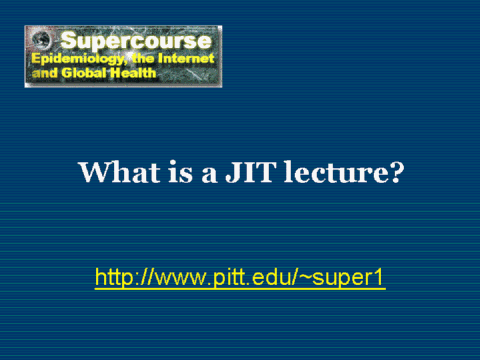| front |1 |2 |3 |4 |5 |6 |7 |8 |9 |10 |11 |12 |13 |14 |15 |16 |17 |18 |19 |20 |21 |22 |23 |24 |25 |26 |27 |28 |29 |30 |31 |32 |33 |34 |35|36 |37 |38 |39 |40 |41 |42 |43 |44 |45 |46 |47 |48 |review |
 |
A JIT lecture is
one of the special applications of the Supercourse blossoms when a major
event happens around the world. These Cutting Edge Educational
lectures aim to reduce fear and save lives by providing the best possible
knowledge. In the field of disasters, continuous "CNN Type" PowerPoint
lectures are provided on the science aspect of disasters and the
epidemiology of their consequences. When the earthquake in Bam, Iran 26 Dec 2003 occurred, Ali Ardalan from Iran worked with Eric Noji and Ronald LaPorte from the US, and Eugene Shubnikov from Russia. Dr. Ardalan developed a JIT lecture within few days ( http://www.pitt.edu/~super1/lecture/lec13181/index.htm ) and updated it ( http://www.pitt.edu/~super1/lecture/lec15221/index.htm ). That was a memorable collaboration, among Russia, Iran and the USA. This was published in the Lancet, and demonstrated how Global Disaster Training could be accomplished. The lecture was used world wide by thousands of educators and seen by a multitude of students. The JIT lecture by Rashid Chotani from Johns Hopkins demonstrated JIT lectures and emerging diseases. He worked with the Supercourse group, and updated the lecture every 2 days (http://www.pitt.edu/~super1/lecture/lec10131/index.htm). This article was also published in the Lancet. We have honed our teachings with other JIT lectures including "Mad cow disease" and "Monkey pox". The model of JIT lectures develops a first lecture describing the scientific basis of the disaster, which can be modified for any country in the world, and then a second CNN type lecture that is on distributed through e-mail, and the web, updating the lecture on a regular basis and distributed worldwide on the web. |